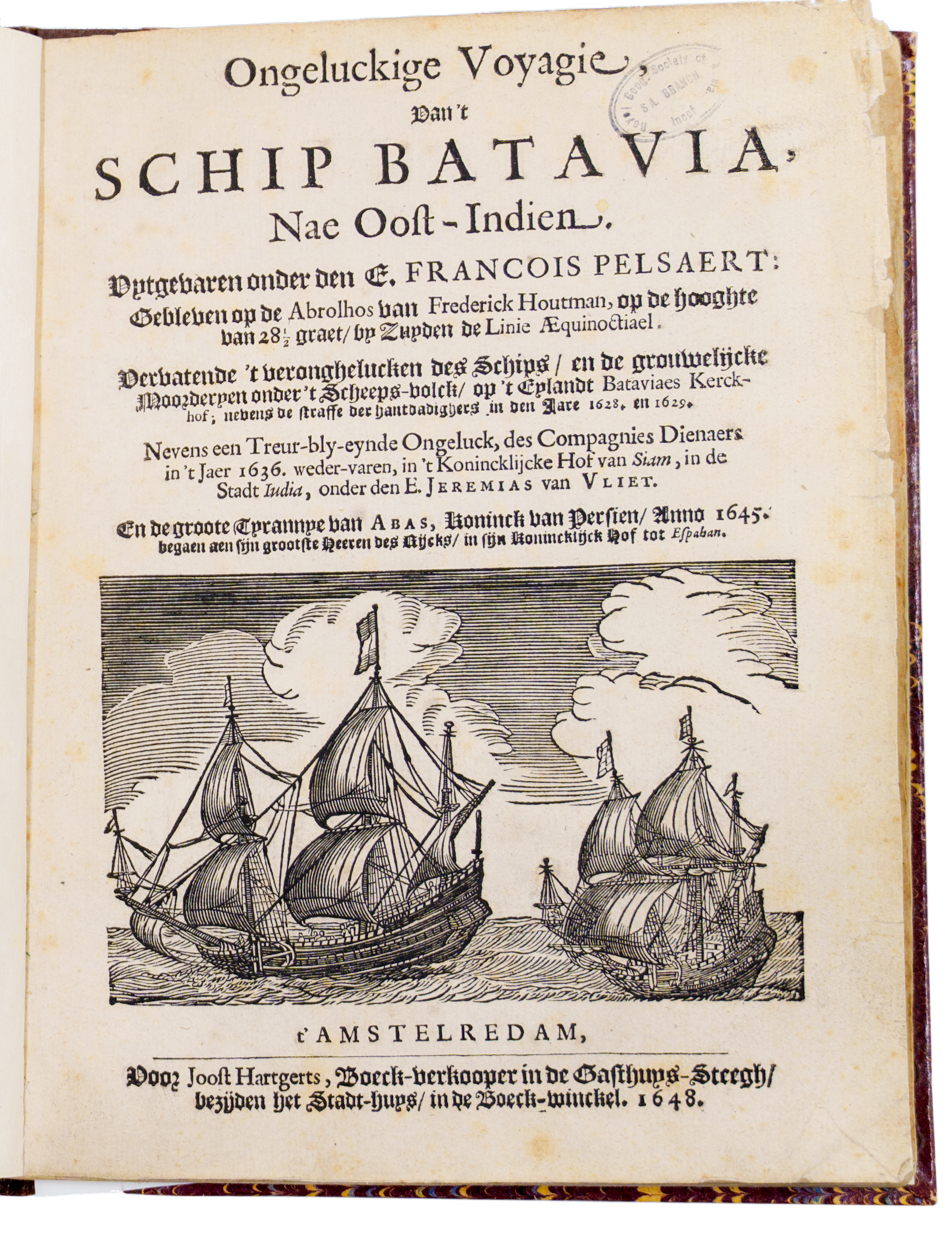The Batavia was a ship of the Dutch East India Company (VOC) built in Amsterdam and fitted out in 1628. She was an East Indiaman of 600 tons, 45.3 m length, 10.2m beam, 55m height, sail area 3,100sm, average speed 5 knots, and carried 22 cast iron cannons, 6 bronze cannons and 2 composite cannons.
She set sail from the port of Texel, Holland on 28th October 1628 in a fleet of eight ships bound for Batavia the capital of the Dutch East Indies. In the North Sea there was a violent storm which separated the ships leaving the only Batavia and two other ships in sight of each other.
After leaving the Cape of Good Hope the Batavia again lost contact with the other ships and sailed on alone. On board were approximately 340 people of which two thirds were sailors and officers, 100 soldiers and rest were civilian passengers including about 30 women and children. In a disastrous error of judgement the ship was wrecked on 4th June 1629 on Houtman Abrolhos chain of islands off the west coast of Australia. Some 300 of the passengers and crew made it to nearby islands and the rest of the ship's complement drowned.
The survivors were unable stay together and about 180 people made it to a sandy outcrop Beacon Island including the women and children. Pelsaert and Jacobsz and about 40 men landed on Traitors' Island while some, including Cornelisz remained with the wreck. Pelsaert soon decided to sail in an open boat to the mainland - the west coast of Western Australia -in the hope of finding water. They were unsuccessful in this so decided their only hope of rescue was to sail the 3,000km northwards to Batavia. This they achieved in 33 days - an impressive feat of seamanship. From Batavia a rescue mission was mounted with the ship Sardam to sail south in search of the wreck and survivors. However, it took them some time to find the islands and 63 days had passed before they reached their destination. During this time chaos and mayhem took place among the survivors who had been left behind.
Right from the beginning Cornelisz had been planning a mutiny hoping to steal the large amount of silver and gold on board and start his own settlement with him as leader. In order to achieve this, and to limit the numbers consuming what little food and water they had left, he therefore set about eliminating any possibility of resistance and claiming the women that he wanted. He sent 22 soldiers to Wallabi Island on the pretext of looking for water assuming they would perish - in fact they did find water and one of their number Wiebbe Haye - eventually was to overpower Cornelisz. Keeping some of the women as sex slaves, Cornelisz organised the murder of about 125 other survivors who he thought might support the rescue party which he planned to hijack on its arrival.
When Pelsaert arrived with the rescue party he was was able to capture Cornelisz and the other mutineers. Seven were punished by having their hands cut off and then being hung, two were marooned. These were the first executions on Australian soil.
Reference: Drake-Brockman, Henrietta, Voyage to Disaster, Angus & Roberson Publishers, Australian Classics, edition 1982
